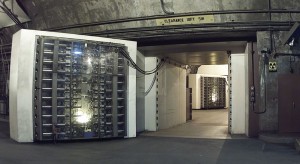— January 9, 2019
Technology continues to play a huge part in business development and innovation. In addition, artificial intelligence along with growing investments in robotic process automation (RPA) will continue to expand. According to a Forbes report, the RPA market will reach $ 1.7 billion in 2019 and by 2021 grow to $ 2.9 billion. The marketplace will not only surge in adoption of RPA, but by the end of the year, it will eliminate exactly 20 percent of service desk interactions due to a combination of RPA, and various chatbot technologies.
Fear is always associated with the word “automation” because it implies a loss of jobs. However, these proliferating technologies make the grass greener on the other side. Some form of automation is already housed within enterprises. The Forbes analysis above confirmed that 40 percent of enterprises will have automation centers in place for this upcoming year.
In the subsequent sections, we will examine what are the benefits RPA will bring to the business sector. Also, will look at the anticipated trends expected to flourish in 2019, and what this means for business or enterprises.
How RPA helps achieve optimal performance and efficiency
RPA represents more than just a fad or the latest trend. It is a technology that helps automate repetitive processes and helps achieve core business goals. In other words, RPA optimizes the process and offers a potential to have software robots execute processes faster and more accurately. What does this yield? It helps your return on investment (ROI) by improving accuracy, compliance, scalability and cost reductions.
In accordance to a Canon Business Process services post, RPA offers additional benefits and they are the following:
- Improved productivity
- Increased accuracy
- Enhanced resource utilization
- Better analytics
So, the above bullet points demonstrate how businesses can focus on core goals and expand their efforts. The help of software robots helps complete tasks approximately five times faster while working 24 hours a day, seven days a week. RPA eliminates clerical or repetitive errors, so your staff and team can focus on developing other vital skills for the business. The collection of data is paramount to this process and your analytics capabilities are exponentially enhanced.
The following infographic below highlights the monumental advantages to RPA. Moreover, it explains what it is, what processes are eligible for automation and how it helps business.
![What to Expect From Robotic Process Automation in 2019 [Infographic] What to Expect From Robotic Process Automation in 2019 [Infographic]](https://www.onlinesalesguidetip.com/wp-content/uploads/2019/01/What-to-Expect-From-Robotic-Process-Automation-in-2019-Infographic.png)
Automation will help your business organization on top of the benefits mentioned above:
- Operating cost reductions
- Regulatory reporting improvements
- Headcount flexibility
- Reduce technology costs
- Process speed and timeliness
So as a business you need to optimize your operations, processes and team. RPA allows your entity more freedom to explore and invest important efforts in maintaining your profitability and revenues simultaneously.
Drawbacks and pitfalls with adopting RPA
When it comes to adopting a new technology or automating a process within a business it does not always lead to success. Not all of the businesses are alike or a created equal because not all may be able to transition to this technology.
The reason RPA is not a one size fits all approach is because CEOs or CIOs may not want to invest on their staff. Instead, they might look at their bottom line and minimize their costs. Conforming to a CIO.com article, it asserts that while enterprises brace for RPA and attempt to transition to new workers to new jobs Forrester research anticipates that RPA software threatens the livelihood of 230 million or more workers.
Some of the other challenges to installing thousands of bots include taking long periods of time. This also results in a complex process to execute and it turns into a costly operation for organizations. Some examples of companies that have adopted RPA include American retailer Walmart, AT&T, Walgreens, Deutsche Bank, and others.
Takeaways and Conclusions
Technology adoption and especially RPA has been embraced and it will be interesting to see how smaller businesses or startups come to terms with it. One of the many predictions Forrester released in their blog post for 2019 included these trends:
- Ten percent of jobs will be lost while 3 percent created
- Approximately 40 percent of enterprises will have automation centers and frameworks
- One out of 10 startups will begin life with more digital workers than human ones
RPA technology will continue to surge and grow. It will be fascinating to see when this technology moves into more industries and see what creations folks will come up within the next decade.
Digital & Social Articles on Business 2 Community
(120)







